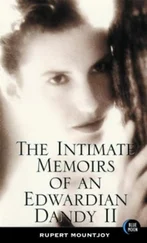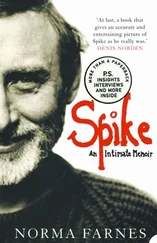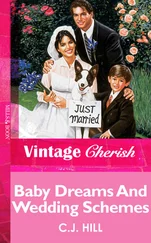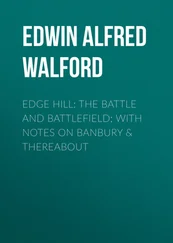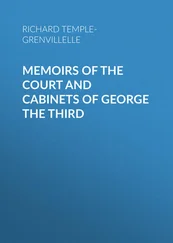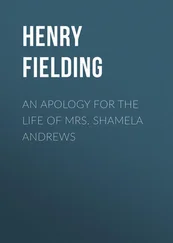I turned to Mrs. Kennedy and gently touched her arm. “We can ride in this car right behind the hearse, Mrs. Kennedy.”
She looked at me, her eyes pooled with pain. “No, Mr. Hill, I’m riding with the president.”
So I opened the door of the hearse and Mrs. Kennedy climbed in. I climbed in right behind her, and we scrunched together, sitting on our knees, still in our bloodstained clothes. There we were, in the back of the hearse—a casket containing the President of the United States, Admiral Burkley, Mrs. Kennedy, and me.
LOVE FIELD HAD been completely sealed off from the public. Agent Andy Berger drove the hearse to the rear steps of Air Force One, and I helped Mrs. Kennedy out. Paul Landis had ridden in the car behind us, and rushed to Mrs. Kennedy’s side.
The crew of Air Force One had removed some seats in the rear of the aircraft to make room for the casket. Now we had to get the casket up the steps into the back of the plane.
Paul stayed with Mrs. Kennedy, while I helped my fellow agents lift the casket out of the hearse. Silently, and with as much dignity as possible, we heaved the heavy bronze casket up the narrow steps of the portable staircase. Everybody was emotionally shattered. You couldn’t stop to think about what it was you were actually doing. Step by step, we finally made it to the top, only to discover that the casket was too wide to go through the door.
We had to get it in. There was no choice. We had to get the casket onto Air Force One. So we broke off the handles, and jammed the casket through the door, as Mrs. Kennedy watched from the bottom of the steps.
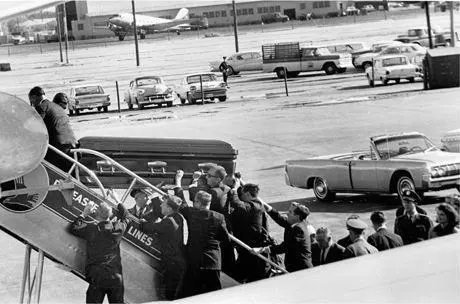
Once the casket was in place, Mrs. Kennedy walked up the stairs and sat in the seat next to the casket. She was joined by O’Donnell, Powers, and Admiral Burkley. For all intents and purposes, Lyndon Johnson was now the president, so the agents on the 4:00–midnight shift were guarding him, guarding the new president. I was concerned about how that might make Mrs. Kennedy feel. Also, having witnessed the tense scene at Parkland Hospital regarding removal of the body, I thought it best that an agent stay with the casket to verify that Admiral Burkley had remained with the casket as well.
I needed to confer with ASAIC Kellerman about plans for our arrival, so I went to Agent Stewart Stout, the shift leader, and said, “Stew, I think, out of respect for President Kennedy, an agent should stay with the casket.” He agreed and Agent Dick Johnsen went back to sit with Mrs. Kennedy and the others.
Everyone was eager to get wheels up and get out of Dallas, but now we had another problem. We learned that Vice President Johnson needed to be sworn in while still on the ground in Dallas. That required a federal judge. Calls were made, and federal judge Sarah Hughes arrived and boarded Air Force One.
Before the swearing-in ceremony began, I was notified that Mrs. Kennedy wanted to see me, in the presidential cabin. I walked through the aircraft, past Vice President Johnson and his staff, and into the compartment.
She was standing there, still in her pink suit. Less than six hours earlier, I had seen her in Room 850 at the Hotel Texas, putting on the finishing touches—the hat, the gloves—and now, the accessories were gone, and the beautiful suit was crusted with blood. We had tried to convince her to change her clothes, but she refused. “Let them see what they have done,” she said.
“Yes, Mrs. Kennedy, what do you need?”
She walked toward me, extended her hands, and grasped mine.
Looking into my eyes, she asked, “What’s going to happen to you now, Mr. Hill?”
Tears welled in my eyes and my lips trembled. “I’ll be okay, Mrs. Kennedy. I’ll be okay.”
With all her sorrow and heartbreak, I thought, to have concern for me at this time. She really is a remarkable lady.
I returned to my seat in the forward section of the aircraft as Mrs. Kennedy joined Vice President and Mrs. Johnson for the swearing-in ceremony. I stood behind Kellerman with Colonel James Swindal, the pilot of Air Force One, at my side, and we watched Lyndon Johnson become the thirty-sixth president of the United States.
Colonel Swindal went back to the cockpit, I took my seat, and Air Force One lifted off the runway from Love Field in Dallas. It was 2:47 P.M.
The flight to Andrews Air Force Base was marked with a solemn, sad, quiet atmosphere. And yet, there was work to be done and plans to be made. The Johnson administration people were calling and planning for their future. The Kennedy people were subdued but making plans as to what to do on arrival in Washington. It was decided to have the autopsy conducted at Bethesda Naval Hospital since President Kennedy was a former naval officer. We would go there by motorcade. President Johnson would go by helicopter to the White House.
THERE WAS A large crowd waiting when we arrived at Andrews, at 5:58 P.M. Air Force personnel and their families, members of the cabinet, the House and Senate, the diplomatic corps, the media—they were all there to pay their respects to the assassinated president, and his young widow.
As soon as Colonel Swindal brought the plane to a stop, the front steps were put in place and the Air Force moved in a hydraulic lift at the rear door of the plane, to lower the casket down to ground level.
I had moved to the rear of the aircraft to be near Mrs. Kennedy. There was a flurry of activity in the front section, and bursting down the aisle, not paying attention to anyone, came Attorney General Robert Kennedy. He embraced Mrs. Kennedy and touched the casket, his eyes filled with tears.
Several of us moved the casket onto the lift, and then Mrs. Kennedy, the attorney general, and members of the fallen president’s staff surrounded the casket as it was lowered to the ground. Agents, staff members, and Air Force personnel helped place the casket in the waiting Navy ambulance.

Bobby Kennedy, Mary Gallagher, Mrs. Kennedy, and Clint Hill watch as casket is loaded into Navy ambulance
Mrs. Kennedy once again insisted on riding in the back with the president. This time the attorney general joined her. On the plane, Mrs. Kennedy had requested Bill Greer drive the ambulance.
He was the president’s driver. He should have the honor of driving him one last time.
Roy Kellerman, Dr. Burkley, and Paul Landis joined him in the front seat. I rode in the car immediately behind the ambulance with Dr. John Walsh and members of President Kennedy’s “Irish Mafia”—Ken O’Donnell, Dave Powers, and Larry O’Brien.
The forty-five minute drive to Bethesda Naval Hospital seemed endless. Sitting in the front seat, staring at the taillights of the ambulance. The events of the day playing over and over in my head. The sounds of grown men weeping in the backseat. Tears would well up in my eyes, and I’d blink them back. Swallow hard.
WHEN WE ARRIVED at Bethesda, the body was taken to the autopsy room accompanied by Dr. Burkley, and Agents Roy Kellerman and Bill Greer. Paul and I escorted Mrs. Kennedy to the presidential suite on the seventeenth floor. We set up a security post as friends and family began to arrive to see Mrs. Kennedy. Paul and I were the only ones that could identify these people, so we became the gatekeepers. Phones were ringing, people were coming and going, and yet the night was going by very slowly. We were waiting for the autopsy procedure to be completed and it was nerve-racking.
At about 2:45 A.M., the phone rang. It was Roy Kellerman.
Читать дальше




